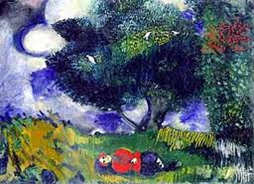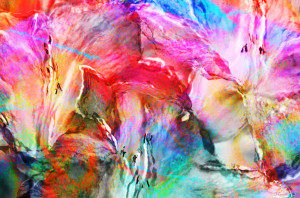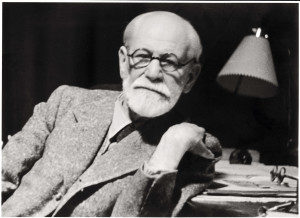What Is Psychoanalysis?
The Psychoanalytic Approach to Psychology.
 NPI adheres to the following definition of psychoanalysis and bases our training programs on these tenets. As a therapy, psychoanalysis is based on the observation that individuals are often unaware of many of the factors that determine their emotions and behavior. These unconscious factors may create unhappiness, sometimes in the form of uncomfortable symptoms and at other times as troubling personality traits, difficulties in work or in love relationships, or disturbances in mood and self esteem. Because these forces are unconscious, the advice of friends and family, the reading of self help books, or even the most determined decisions to change often fail to provide relief.
NPI adheres to the following definition of psychoanalysis and bases our training programs on these tenets. As a therapy, psychoanalysis is based on the observation that individuals are often unaware of many of the factors that determine their emotions and behavior. These unconscious factors may create unhappiness, sometimes in the form of uncomfortable symptoms and at other times as troubling personality traits, difficulties in work or in love relationships, or disturbances in mood and self esteem. Because these forces are unconscious, the advice of friends and family, the reading of self help books, or even the most determined decisions to change often fail to provide relief.
Psychoanalytic treatment (analysis) demonstrates how these unconscious factors affect current relationships and patterns of behavior, traces them back to their historical origins, shows how they have changed and developed over time, and helps the individual to deal better with the realities of adult life.
Analysis is an intimate partnership, within which the patient becomes aware of the underlying sources of his or her difficulties not simply intellectually, but emotionally—by re-experiencing them with the analyst. Typically, the patient lies on a couch, and attempts to say everything that comes to mind. They may come three or four times a week or more depending on the need of the patient. These conditions create the analytic setting, which permits the emergence of aspects of the mind not accessible to other methods of observation. As the patient speaks, hints of the unconscious sources of current difficulties gradually begin to appear—in certain repetitive patterns of behavior, in the subjects which the patient finds hard to talk about and in the ways the patient relates to the analyst.
The analyst helps elucidate these for the patient, who refines, corrects, rejects, and adds further thoughts and feelings. During the time that an analysis takes place, the patient wrestles with these insights, going over them again and again with the analyst and experiencing them in daily life, in fantasies, and in dreams. Patient and analyst join in efforts not only to modify crippling life patterns and remove incapacitating symptoms, but also to expand the freedom to work and to love. Eventually the patient’s life—his or her behavior, relationships, sense of self—changes in deep and abiding ways.
Is It Only Therapy?
 Although psychoanalysis began as a tool for ameliorating emotional suffering, it is not only a therapy. It is, in addition, a method for learning about the mind, and also a theory, a way of understanding the processes of normal everyday mental functioning and the stages of normal development from infancy to old age. Furthermore, since psychoanalysis seeks to explain how the human mind works, it contributes insight into whatever the human mind produces. In so doing, it has had a profound influence on many aspects of twentieth-century culture.
Although psychoanalysis began as a tool for ameliorating emotional suffering, it is not only a therapy. It is, in addition, a method for learning about the mind, and also a theory, a way of understanding the processes of normal everyday mental functioning and the stages of normal development from infancy to old age. Furthermore, since psychoanalysis seeks to explain how the human mind works, it contributes insight into whatever the human mind produces. In so doing, it has had a profound influence on many aspects of twentieth-century culture.
As a general theory of individual human behavior and experience, psychoanalytic ideas enrich and are enriched by the study of the biological and social sciences, group behavior, history, philosophy, art, and literature. As a developmental theory, psychoanalysis contributes to child psychology, education, law, and family studies. Through its examination of the complex relationship between body and mind, psychoanalysis also furthers our understanding of the role of emotions in health as well as in medical illness.
Psychoanalytic knowledge is the basis of all other dynamic approaches to therapy. Whatever the modifications, the insights of psychoanalysis form the underpinnings of much of the psychotherapy employed in general psychiatric practice, in child psychiatry, and in most other individual, family, and group therapies.
The Psychoanalytic Tradition

Sigmund Freud was the first psychoanalyst. Many of his insights into the human mind, which seemed so revolutionary at the turn of the century, are now widely accepted by most schools of psychological thought. Although others before and during his time had begun to recognize the role of unconscious mental activity, Freud was the preeminent pioneer in understanding its importance. Through his extensive work with patients and through his theory building, he showed that factors which influence thought and action exist outside of awareness, that unconscious conflict plays a part in determining both normal and abnormal behavior, and that the past shapes the present.
Although his ideas initially met with antagonism and resistance, Freud believed deeply in the value of his discoveries. He saw that those who sought to change themselves or others must face realistic difficulties. But he also showed that, while the dark and blind forces in human nature sometimes seem overwhelming, psychological understanding can make a substantial difference to troubled individuals and even to civilization as a whole.
Building on such ideas and ideals, psychoanalysis has continued to grow and develop as a general theory of human mental functioning, while always maintaining a profound respect for the uniqueness of each individual life. Ferment, change, and new ideas have enriched the field, and psychoanalytic practice has adapted and expanded. But psychoanalysts today still appreciate the persistent power of the unconscious in shaping or limiting human lives, and therefore remain skeptical of the quick cure, the deceptively easy answer, the trendy or sensationalistic. Like Freud, they believe that psychoanalysis is the strongest and most sophisticated tool for obtaining further knowledge of the mind, and that by using this knowledge for greater self-awareness, patients free themselves from unnecessary suffering, and improve and deepen human relationships.
Newport Psychoanalytic Institute
NPI provides psychoanalytic and psychotherapy focused continuing education, seminars, workshops, and conferences to the Orange County, Los Angeles and Pasadena areas.
For more information on psychoanalysis, see the American Psychoanalytic Association website.
.


